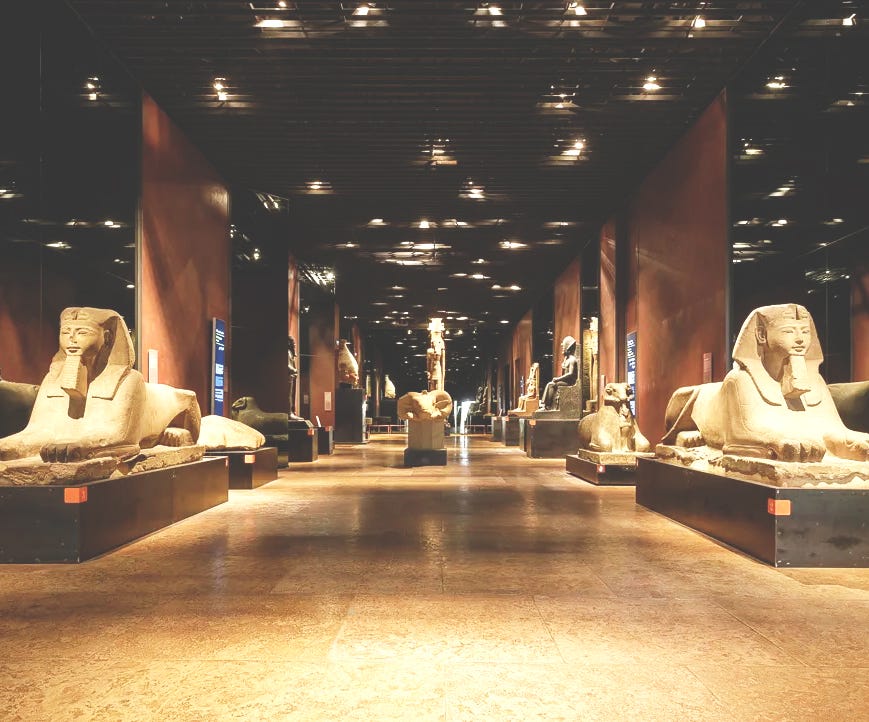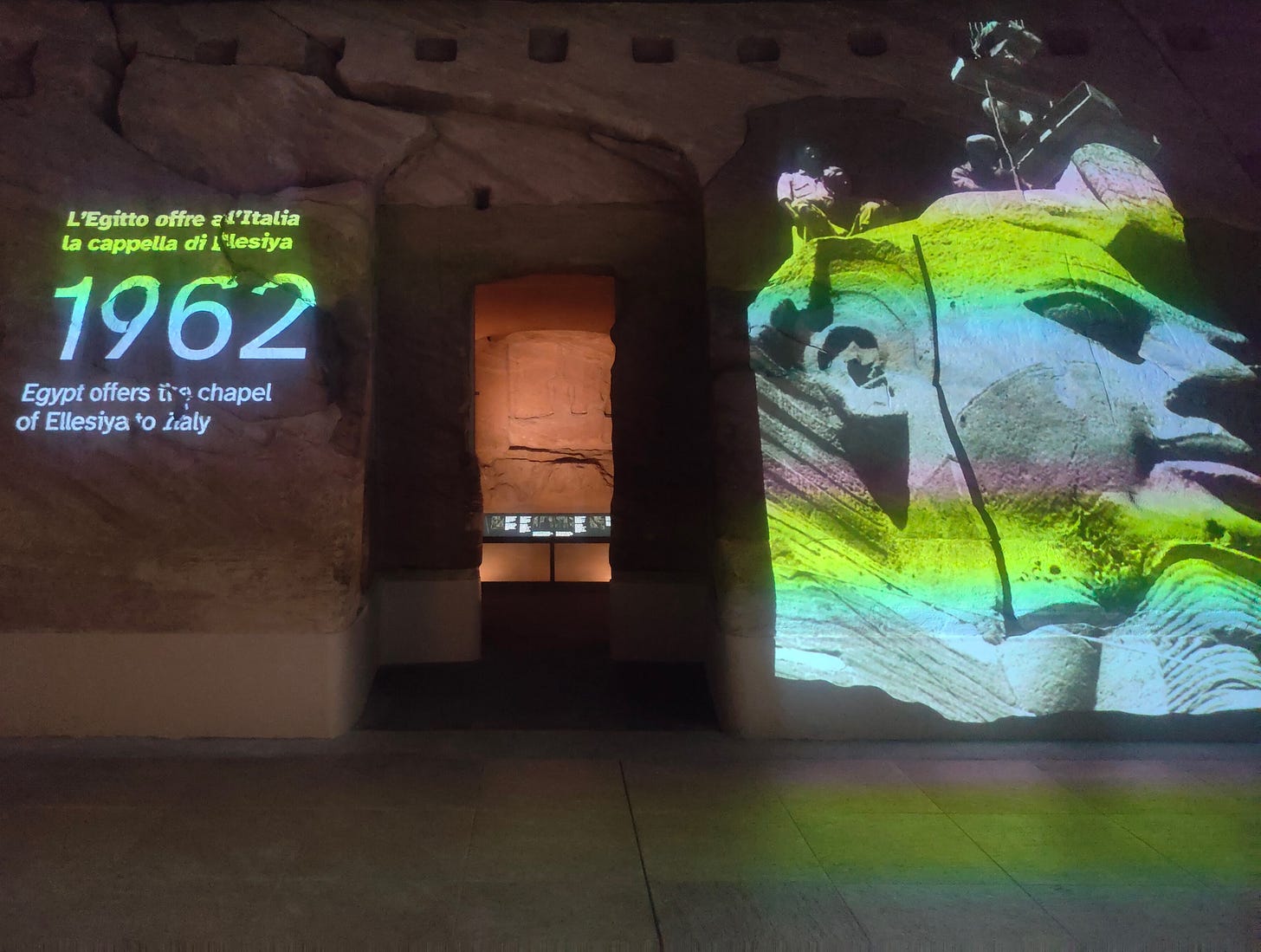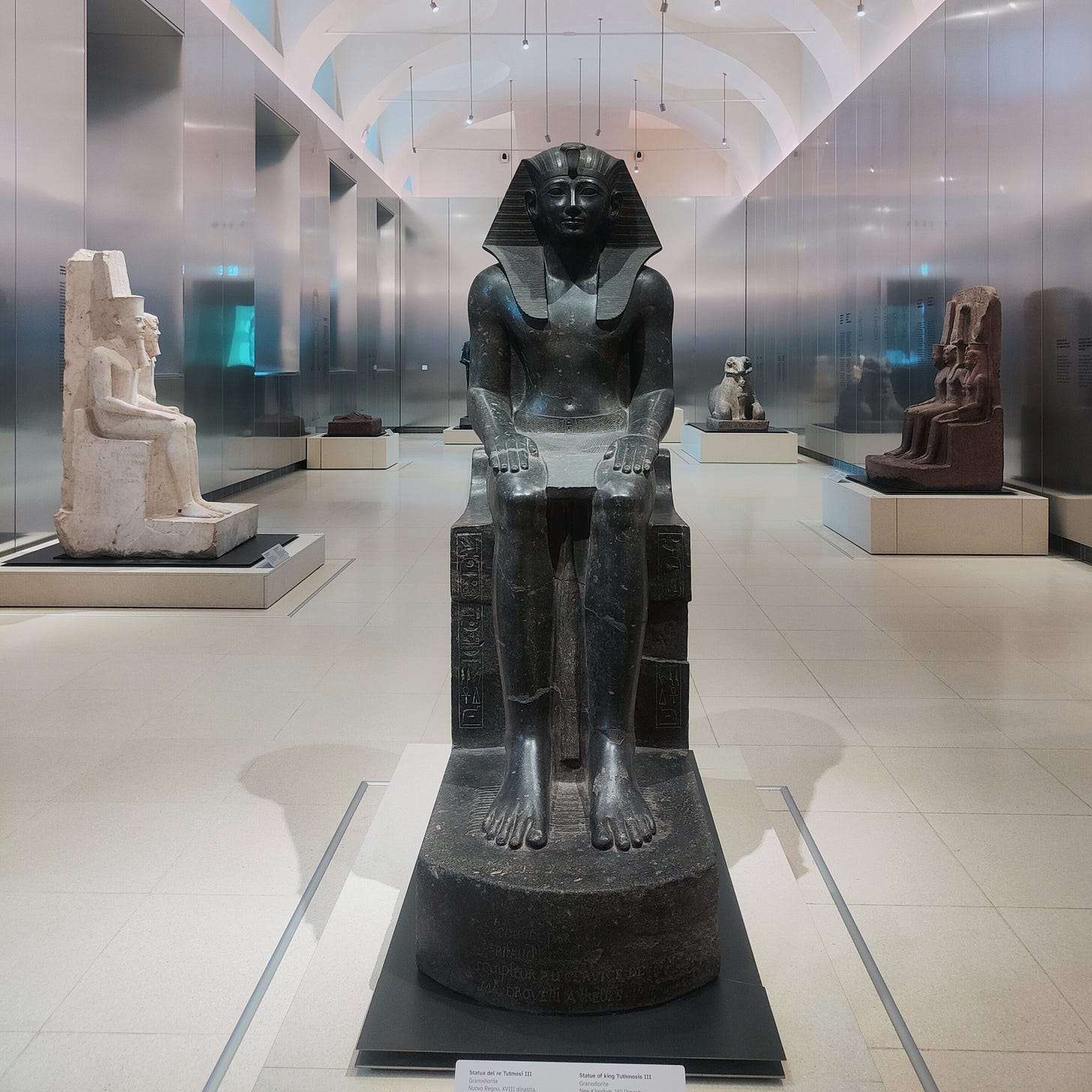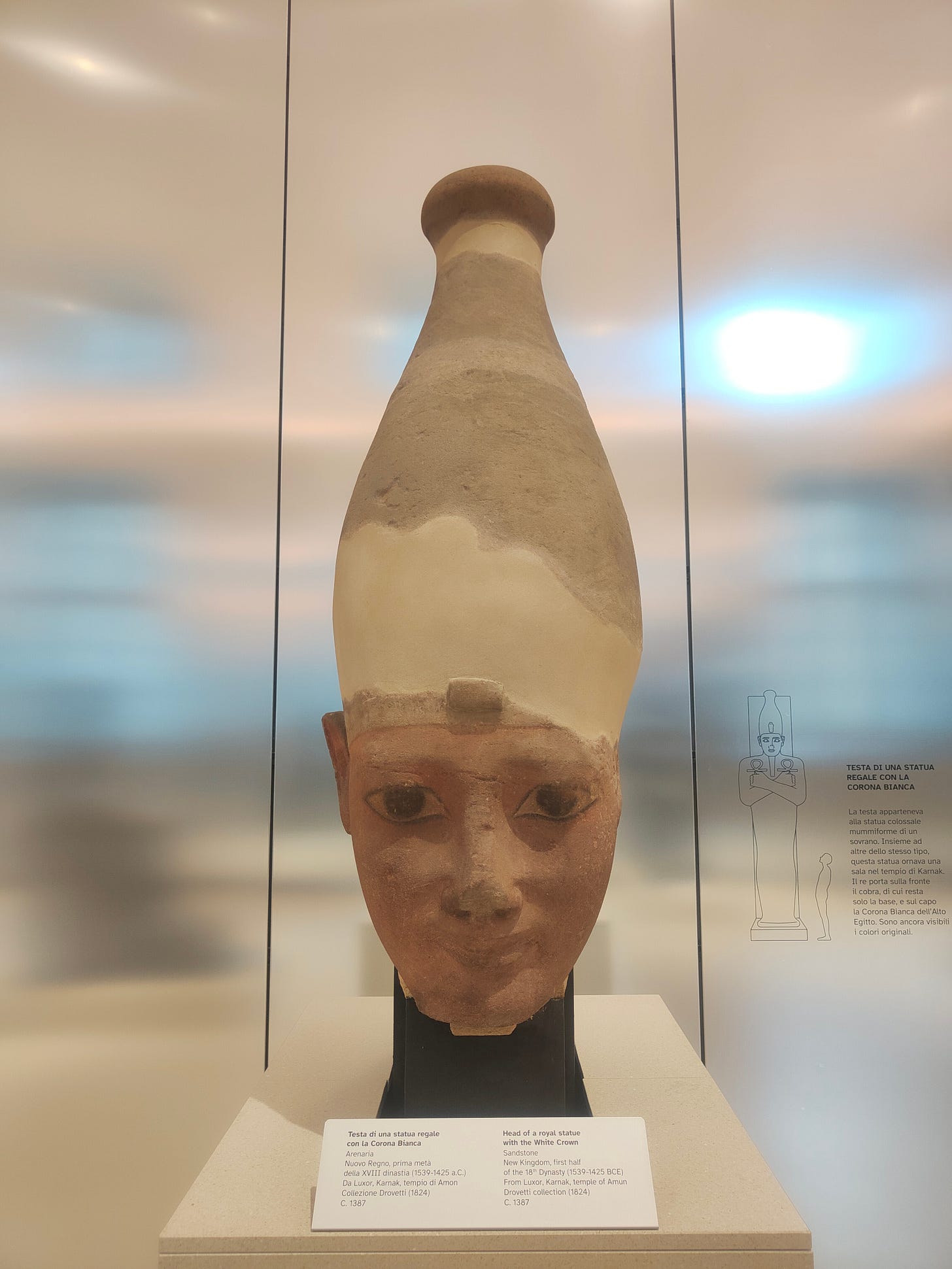Art Snapshot: The Egyptian Museum in Turin comes packaged in a shiny candy-wrapper for its bicentennial.
On a recent trip to Turin I made a long-awaited visit to the Museo Egizio, recently renovated the Dutch office OMA and Andrea Tabocchini Architecture. Does every museum require an upgrade?
Turin’s Museo Egizio— Egyptian Museum, celebrated its bicentennial year in 2024. It is the oldest institution dedicated exclusively to ancient Egyptian culture, and features one of the largest holdings outside Egypt. Much of the collection was assembled in the early 19th century. Italian egyptologists worked closely with their French counterparts, who acted under license to the Egyptian government and helped contribute to the creation and establishment of the first national museum in the Middle East, the Egyptian Museum in Cairo. As a result, the procurement of the Egyptian artifacts and their removal to Italy are at least for now considered legitimate acquisitions, which effectively shields the museum from onerous claims to its historic collection.

When I arrived in Cairo in 2008 one of my first stops was to visit this immense Egyptian Museum next to Tahir Square. I was floored by the incredible scale of the galleries, the rows upon rows of splendid artifacts and ragged mummies and the displays of millennial bed-frames and chairs that seemed straight out of an IKEA catalogue. As I walked around the collection in the cool penumbra I felt myself sinking into a trance-like state. I was overwhelmed by the sheer creativity and craftsmanship exhibited by this ancient and noble culture.
I also noticed at the time that there were several Italian names cited on the wall labels that gave basic historical references to the objects on display: their presence was no coincidence. Ernesto Schiaparelli (1856 - 1928), the Italian archaeologist who would play a major role in compiling and organizing the Turin museum’s collection, was a student of Gaston Maspero. Maspero served as the Egyptian Museum’s director on and off from 1881 to 1914 which helps explain the direct connection between the museums in Cairo and Turin.
Looking across the aluminum clad walls at the procession of regal statues inside the Museo Egizio’s renovated galleries I realized I had in mind something completely different when I decided to visit the museum on this trip. There were no gloomy halls and dust covered objects, nor were there dark corridors with endless stacks of mummies. There weren’t even any faded photographs from the distant past. Instead I found myself standing inside a shiny candy-wrapper.
Evidently, the bicentennial provided the necessary impetus to address once and for all the Turin museum’s most serious spatial challenges. The 23 million euro renovation going on at the moment—it is not finished yet—replaces the darkly illuminated halls created by the stage-set designer Dante Ferretti, in preparation for Turin’s Winter Olympics in 2006. The current architectural rehabilitation also addresses the renovations from 2015 when the museum’s exhibition spaces were vastly expanded. Not much, if anything, from the original 19th century displays have survived into the present.

Egypt’s government, on the other hand, took a completely different approach: instead of tweaking the aging museum in the center of Cairo, they preferred to relocate to the “Grand Egyptian Museum” a huge airport sized structure set on the outskirts of the capital facing the monumental Giza Pyramids.
The Turin project kept to its original location. OMA, the Office for Metropolitan Architecture, the brainchild of the Dutch born architect Rem Koolhaas, set out to rethink the processional order of the museum itself. OMA’s winning proposal for the museum’s renovation provided for a singular integral vision uniting the museum’s architecture with its extensive collections, resolving in the process structural incompatibilities that accumulated over the years. OMA created new arteries for vertical movement and reconfigured the horizontal gallery circulation system. It also created —within the building’s historic interior courtyard—an independent public piazza connecting the museum complex to the surrounding city.
With all the major work transforming the 16th century plus building under OMA’s direction, the aluminum clad walls that envelope the prized collection of Egyptian statuary in the Gallery of Kings comes off like a undercooked decorative device. Reflective mirrored surfaces are not the best way to augment natural light. Rather, an appropriate play of light could have been achieved by materials whose natural characteristics reinforce the colors and textures of the objects on display.
But was such a major renovation of the Museo Egizio necessary in the first place? Could an aging architectural landmark like this one succeed in imparting a more authentic experience if it could be left to age in all its glory? Surprisingly, Rem Koolhaas gave some real thought to this option, though not for the Egyptian Museum in Turin.
The star-architect did take the time to critically reflect on the meaning of renewal while he was working on his proposal for the grand Hermitage Museum in Saint Petersburg back in 2003. Koolhaas wrote: “Does every museum need to be modernized? Do all museums have to adhere to the same technical conditions? Do all museums have to be extended and updated, or can a certain amount of inaction, a certain resistance to change, actually be instrumental in maintaining a degree of the authenticity so frequently erased during the process of modernization?”
A truly good question, coming from one of the greatest architectural minds today. Could a museum like the Museo Egizio have survived with much less glitter? With fewer interventions?

Once I finished my tour of the museum and exited the building I realized I could still go see the famed Ellesiya Rock Chapel that had just reopened for visitors around the building’s corner. After surviving centuries, the Rock Chapel’s existence was threatened when the Nasser dam project reached completion in the mid 1960s. Egypt reached out to the Italian government to participate in a major international rescue effort. The Rock Chapel was taken apart and transported to Turin in 1967. During OMA’s renovation, it was again reassembled and placed opposite the museum’s main entrance.
I stepped across the gallery’s threshold, and beheld the Rock Chapel. The precious cavern is over 3500 years old. Oddly, the stone facade glowed under a powerpoint projection. This seemed to be a heavy-handed way to recount the history of the Chapel’s dismemberment and reconstruction. I found the slide show frankly alienating. Could I possibly pull the plug on the projector? I would have preferred to contemplate the Chapel in peace.
Postscript:
Ironically the most controversial issue concerning the Museo Egizio to date involves the director, Christian Greco, who had set up a policy providing free entry tickets for Arab speaking families visiting the museum, something quite appropriate considering the provenance of the collection. However, his policy became a flashpoint for right wing politicians in 2018, who denounced Greco for reverse discrimination. Giorgia Meloni, then leader of the Fratelli di Italia, FDI, before she went on to become Prime Minister, also took up accusations against Greco. And more recently, around the time of the 2024 Bicentennial commemorations, Greco’s position as director was again challenged, and his renewal, despite his impressive successes, put into doubt.






